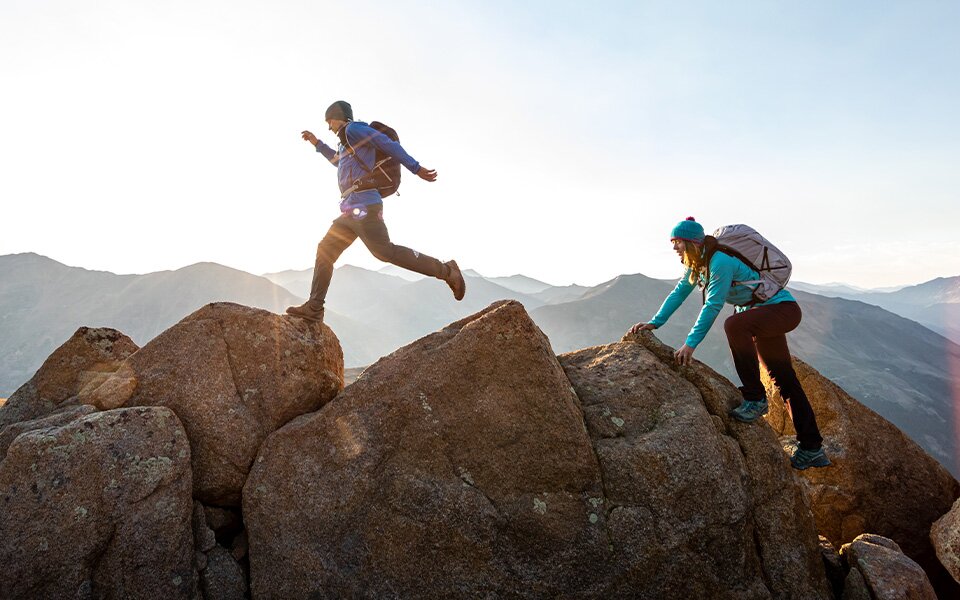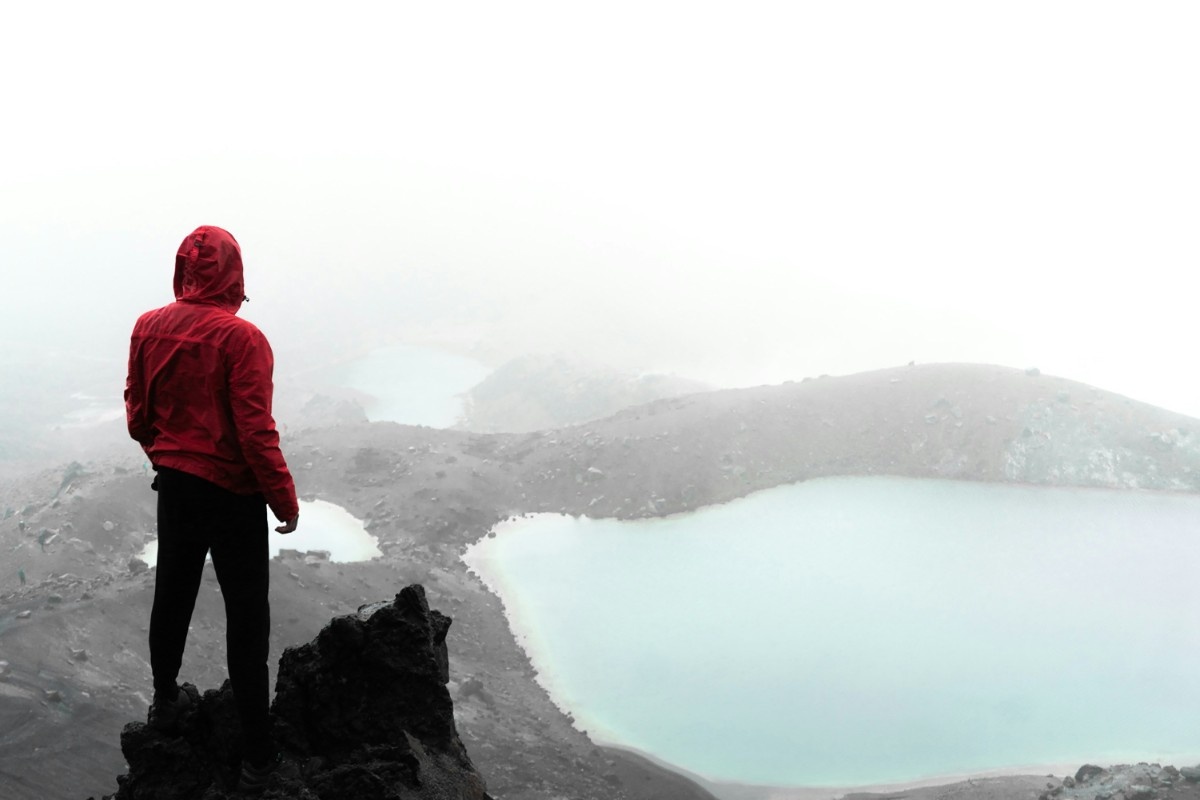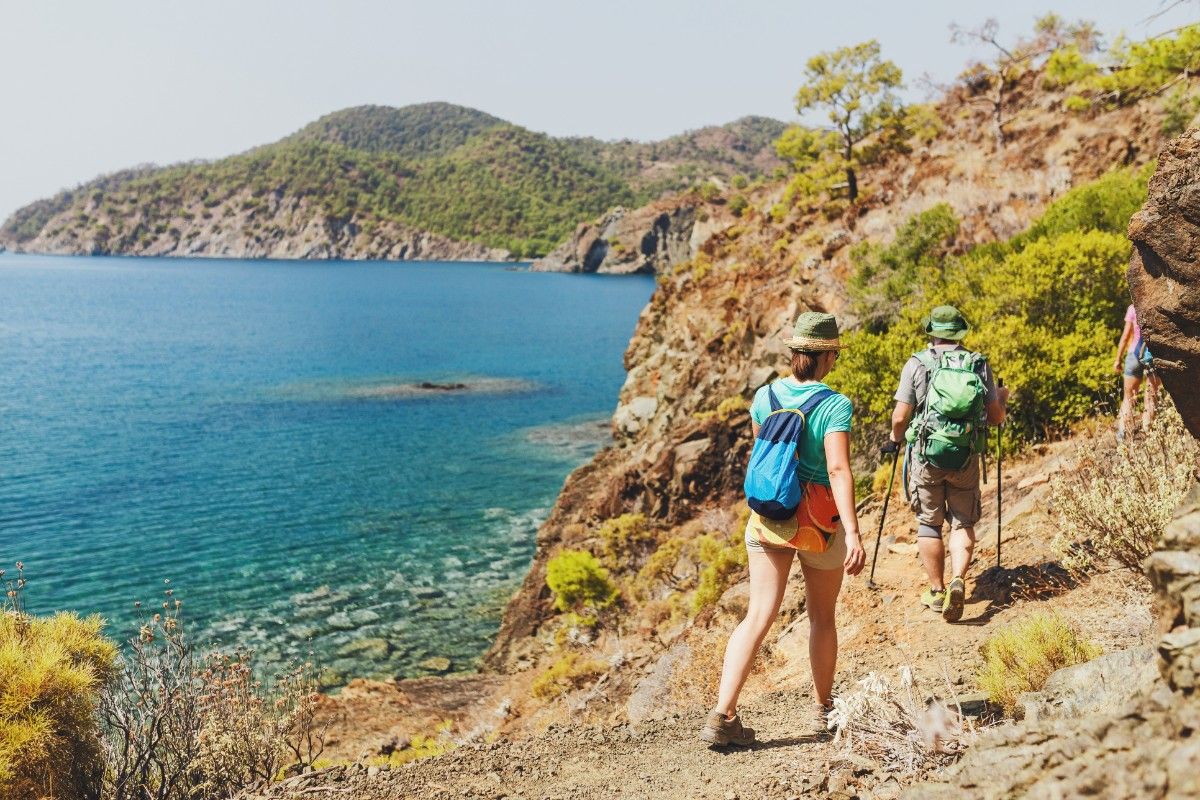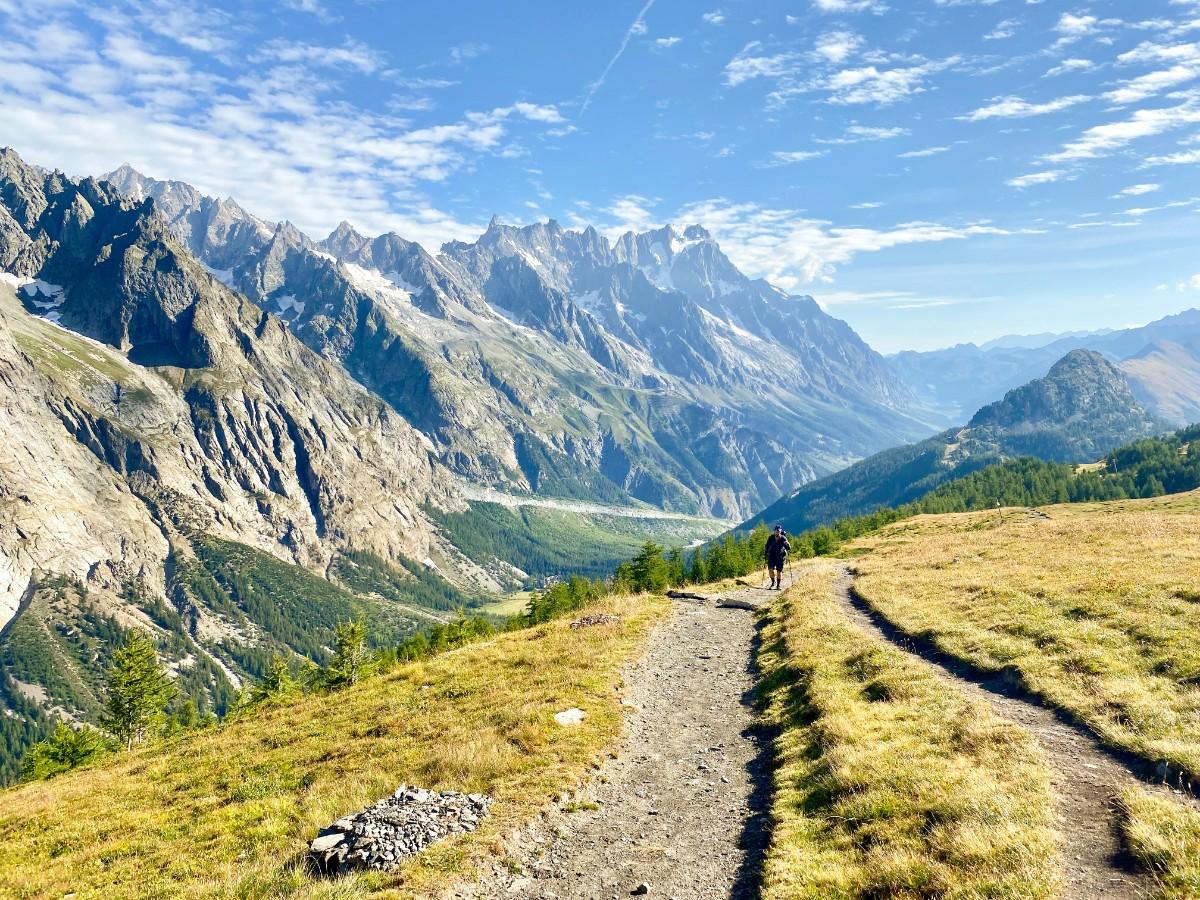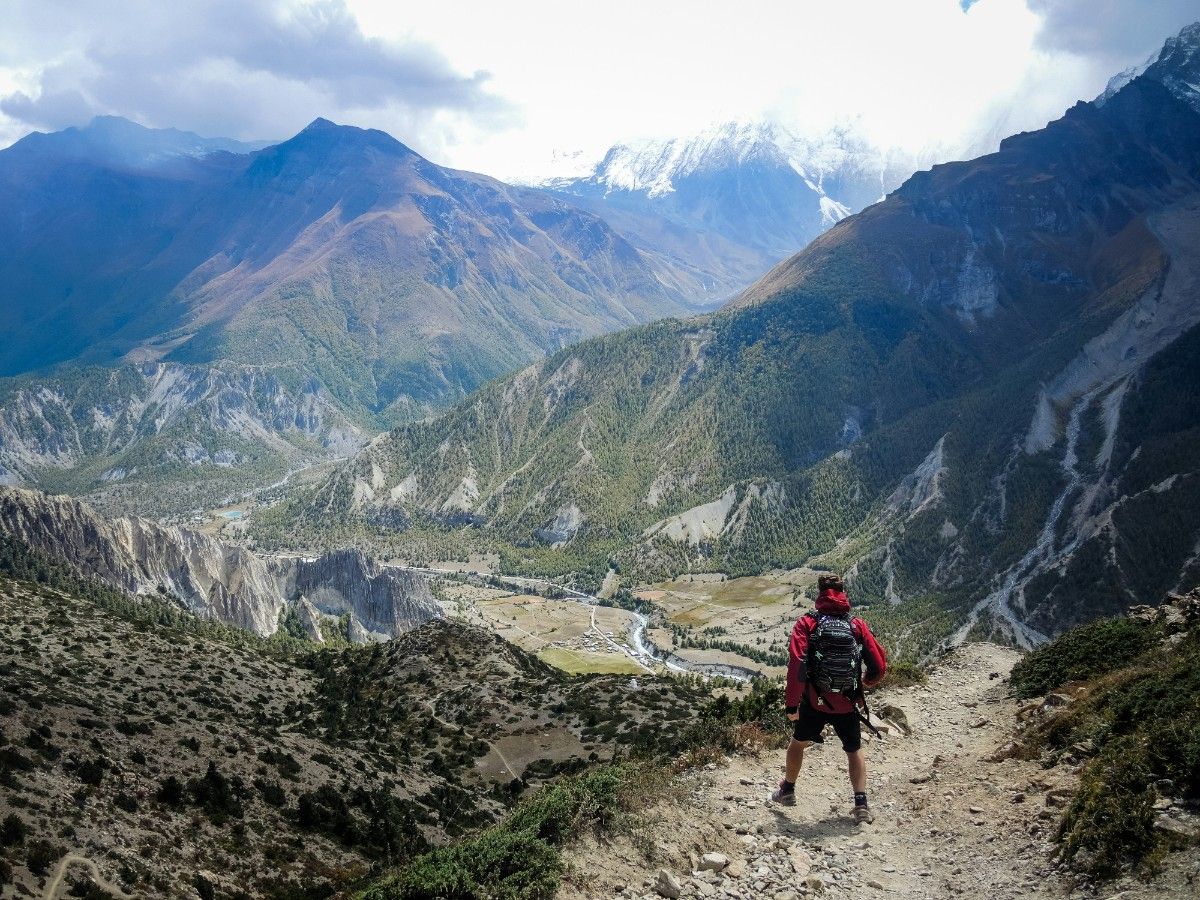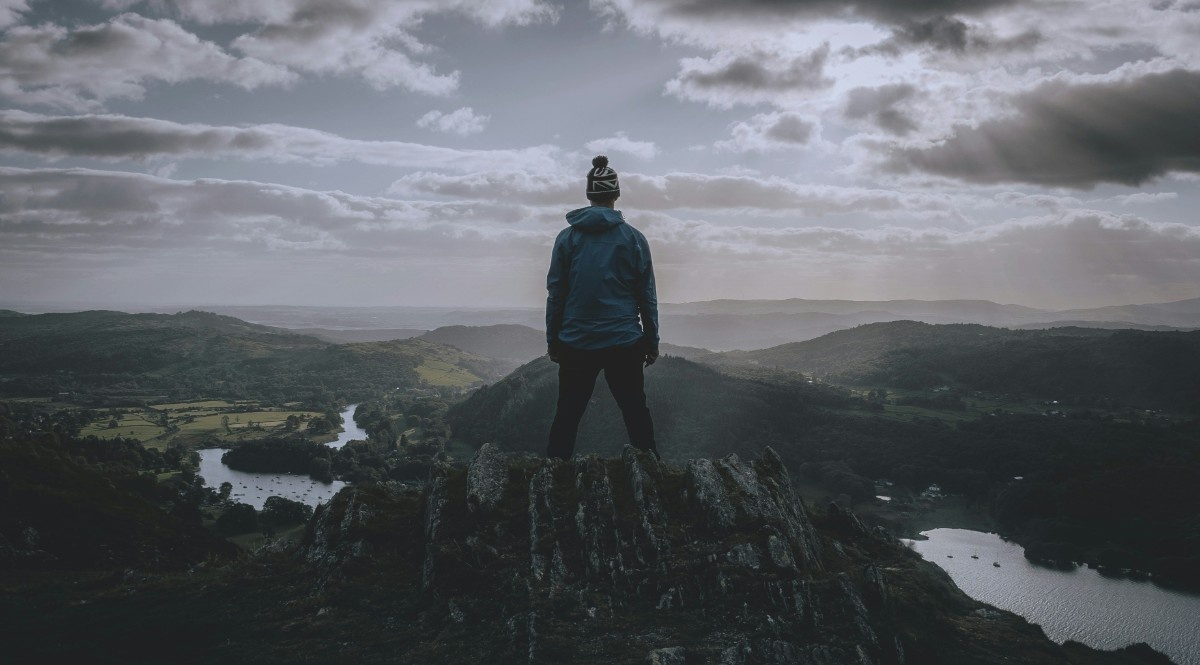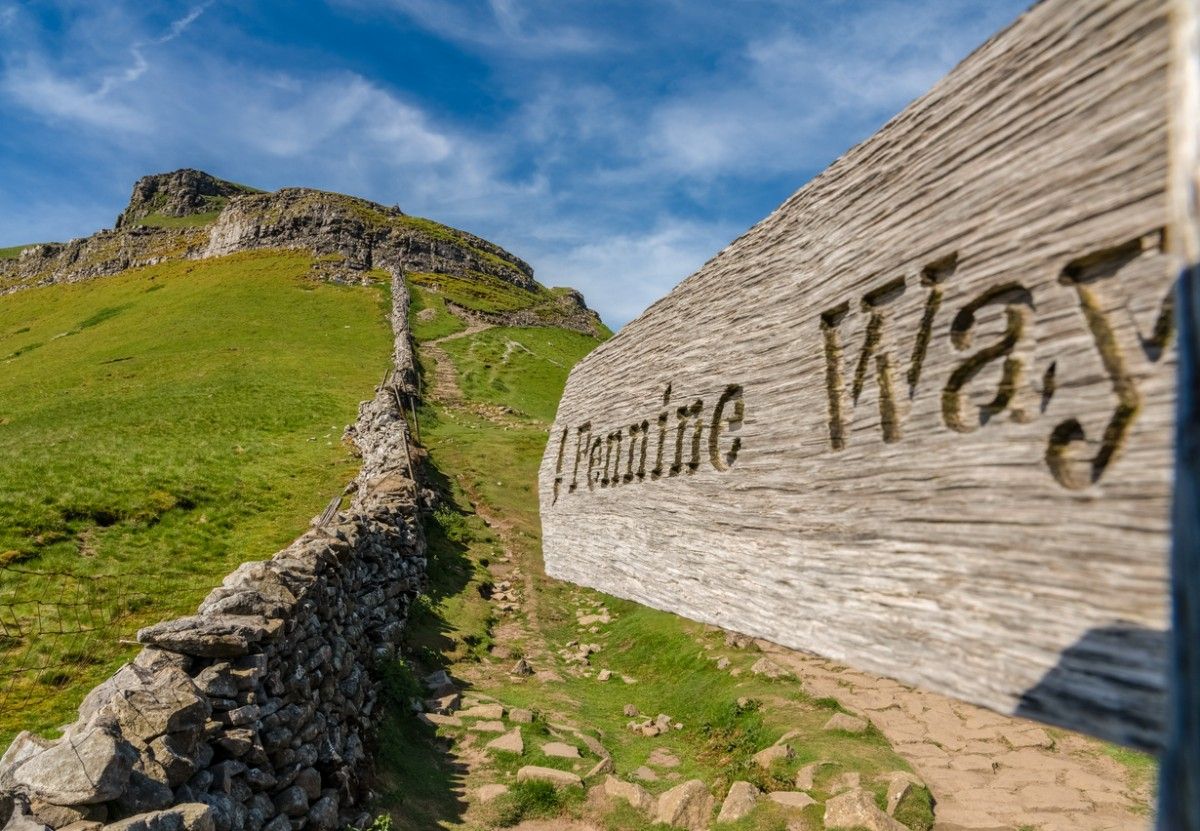The Essence of Hiking: An Introduction to the Great Outdoors
Defining Hiking: More Than Just a Walk in the Park
Hiking is a pursuit that transcends the simple act of walking. It's an immersive experience that connects us with the natural world, challenges our bodies, and rejuvenates our minds. Unlike a casual stroll, hiking often involves traversing varied terrain, from gentle paths to rugged trails, and can range from short day hikes to multi-day backpacking adventures. The essence of hiking lies in its ability to transport us away from the hustle and bustle of daily life, allowing us to explore the great outdoors at our own pace.
Hiking offers a unique blend of physical exercise, mental stimulation, and natural exploration. As you lace up your hiking boots and step onto a trail, you're embarking on a journey that engages all your senses. The crunch of leaves underfoot, the scent of pine in the air, the sight of sweeping vistas, and the feel of a cool breeze on your skin all contribute to the rich tapestry of the hiking experience. Whether you're seeking a gentle walk through a local park or a challenging trek across rugged mountain terrain, hiking provides an opportunity to immerse yourself in nature and discover the hidden wonders of the landscape.
Moreover, hiking is an activity that can be enjoyed by people of all ages and fitness levels. From families with young children to seasoned adventurers, there's a hiking trail suitable for everyone. The versatility of hiking makes it an accessible form of outdoor recreation, requiring minimal equipment to get started. As you gain experience and confidence, you can gradually tackle more challenging routes, constantly pushing your boundaries and expanding your horizons.
The Physical and Mental Benefits of Hitting the Trails
The physical benefits of hiking are numerous and well-documented. As a form of cardiovascular exercise, hiking strengthens the heart, improves blood pressure, and boosts overall fitness. The varied terrain of most hiking trails engages multiple muscle groups, providing a full-body workout that's more dynamic and engaging than many gym-based exercises. Hiking can help strengthen your legs, core, and back muscles, enhance your balance and coordination, and increase your endurance.
But the benefits of hiking extend far beyond the physical. Spending time in nature has been shown to have profound effects on mental health and well-being. The act of hiking, with its rhythmic pace and focus on the present moment, can serve as a form of moving meditation, helping to clear the mind and reduce stress. The natural surroundings provide a respite from the constant stimulation of modern life, allowing for mental rejuvenation and improved cognitive function.
Studies have shown that time spent in green spaces can lower cortisol levels (the stress hormone), reduce symptoms of anxiety and depression, and improve overall mood. The sense of accomplishment that comes from completing a challenging hike can also boost self-esteem and confidence. Whether you're conquering a steep incline, navigating a tricky section of trail, or simply enjoying the beauty of your surroundings, hiking provides numerous opportunities for personal growth and self-discovery.
Connecting with Nature: The Environmental Aspect of Hiking
Hiking offers a unique opportunity to connect with the natural world in a meaningful way. As you traverse various ecosystems, from lush forests to open meadows, you gain a firsthand appreciation for the diversity and beauty of the natural environment. This connection can foster a sense of environmental stewardship, encouraging hikers to become advocates for nature conservation and sustainable outdoor practices.
Many hikers find that their time on the trails deepens their understanding of local flora and fauna. You might learn to identify different tree species, spot wildlife in their natural habitats, or observe the changing seasons through subtle shifts in the landscape. This increased awareness of the natural world can lead to a greater sense of responsibility towards environmental protection and conservation efforts.
Moreover, hiking can serve as a gateway to broader environmental education. Many hiking trails feature informational signs about local ecology, geology, or history, providing opportunities for learning while on the move. Organised hikes led by naturalists or park rangers can offer even deeper insights into the ecosystems you're exploring. By fostering this connection with nature, hiking not only benefits the individual but also contributes to a collective appreciation and protection of our natural spaces.
Essential Hiking Gear: Equipping Yourself for the Trail
Footwear: The Foundation of a Successful Hike
When it comes to essential hiking gear, nothing is more crucial than proper footwear. Your choice of hiking boots or hiking shoes can make or break your hiking experience, affecting your comfort, safety, and overall enjoyment of the trail. The right footwear provides support, protection, and traction, helping you navigate various terrains with confidence.
For casual day hikes on well-maintained trails, lightweight hiking shoes might be sufficient. These offer good traction and comfort without the added bulk of traditional boots. However, for more challenging terrains or multi-day hikes, sturdy hiking boots are often the better choice. They provide ankle support, which is crucial when carrying a heavy backpack or traversing uneven ground.
When selecting hiking footwear, consider factors such as the type of terrain you'll be tackling, the duration of your hikes, and the weather conditions you're likely to encounter. Waterproof hiking boots are an excellent investment for those hiking in wet conditions or crossing streams. They keep your feet dry, reducing the risk of blisters and enhancing overall comfort.
Fit is paramount when it comes to hiking footwear. Your boots or shoes should feel comfortable from the start, with enough room for your toes to wiggle and minimal heel slippage. Many outdoor stores offer professional fitting services to help you find the perfect pair. Remember to break in your new footwear before embarking on a long hike to avoid blisters and discomfort on the trail.
Lastly, don't forget about hiking socks. These specialised socks are designed to wick moisture away from your feet, reduce friction, and provide additional cushioning. They play a crucial role in preventing blisters and keeping your feet comfortable throughout your hike.
Clothing: Dressing for Comfort and Protection
Proper clothing is another essential aspect of hiking gear. The key to outdoor comfort is layering, which allows you to adapt to changing weather conditions and activity levels. Start with a moisture-wicking base layer to keep sweat away from your skin. This can be a synthetic or merino wool shirt that helps regulate your body temperature.
Over your base layer, add an insulating mid-layer for warmth. This could be a fleece jacket or a lightweight down vest, depending on the temperature. Your outer layer should be windproof and waterproof to protect you from the elements. A good quality rain jacket is an essential piece of hiking gear, even if the forecast looks clear.
Hiking trousers are another important consideration. Unlike regular trousers, hiking trousers are designed to withstand the rigours of the trail. They're typically made from durable, quick-drying materials that offer protection from scratches, UV rays, and insects. Many hiking trousers feature zip-off legs, allowing you to convert them into shorts when the weather warms up.
Don't forget about accessories like hats and gloves. A wide-brimmed hat offers protection from both sun and rain, while gloves can keep your hands warm in cooler weather and protect them when scrambling over rocks. Sunglasses are also important for protecting your eyes from harmful UV rays, especially at higher altitudes where the sun's intensity increases.
Backpacks: Carrying Your Essentials in Comfort
A good hiking backpack is indispensable for carrying your gear and supplies. The size of your pack will depend on the duration of your hike and the amount of gear you need to carry. For day hikes, a small hiking bag with a capacity of 20-30 litres is usually sufficient. For multi-day treks, you'll need a larger hiking backpack, typically 50-70 litres, to accommodate camping gear and additional supplies.
When choosing a hiking backpack, look for features such as padded shoulder straps and a hip belt for comfort, multiple compartments for organisation, and a built-in rain cover for weather protection. Some backpacks also come with a hydration system, allowing you to drink water on the go without stopping to remove a water bottle.
The way you pack your backpack can significantly affect your comfort on the trail. Place heavier items close to your back and towards the middle of the pack to maintain your centre of gravity. Keep frequently used items like snacks, your first aid kit, and rain gear easily accessible in outer pockets or at the top of your pack.
Remember, the best hiking backpack is one that fits your body properly. Cotswold Outdoor offer fitting services to help you find a backpack that matches your torso length and body shape. A well-fitted backpack distributes weight evenly across your hips and shoulders, reducing strain and making your hike more enjoyable.
Planning Your Hike: From Trail Selection to Navigation
Choosing the Right Trail: Matching Hikes to Your Ability
Selecting the appropriate trail is crucial for a successful and enjoyable hiking experience. The process begins with an honest assessment of your fitness level, hiking experience, and personal preferences. For beginners or those looking for a leisurely outing, searching for "hiking trails near me" or "hiking trails close to me" can reveal a wealth of local options. These nearby trails are often well-maintained and suitable for novice hikers.
As you gain more experience, you might feel drawn to more challenging adventures. The Peak District, for instance, offers a variety of hikes ranging from gentle walks to demanding treks. Peak District hikes are renowned for their stunning landscapes and diverse terrains, making them a popular choice for hikers of all levels. When researching potential trails, look for information on distance, elevation gain, estimated time, and difficulty level. Many hiking websites and apps provide detailed trail descriptions, user reviews, and photos to give you a better idea of what to expect.
Consider the time of year and expected weather conditions when planning your hike. Different seasons can dramatically alter the character of a trail, affecting everything from water availability to the presence of insects and wildlife. Check the weather forecast before your hike and be prepared for potential changes – mountain weather, in particular, can be notoriously unpredictable.
For longer hikes or those in remote areas, it's crucial to plan your water and food strategy. Identify reliable water sources along your route and decide whether you'll need to carry all your water or if you can refill along the way. If you plan to collect water from natural sources, be sure to bring appropriate water treatment methods such as filters or purification tablets. Food planning is equally important. For day hikes, pack enough high-energy snacks and a lunch to keep you fuelled throughout the day. For multi-day hikes, carefully calculate your calorie needs and pack lightweight, nutrient-dense foods that won't spoil easily.
Navigation Essentials: Maps, Compasses, and GPS Devices
Effective navigation is a fundamental skill for any hiker. Even on well-marked trails, it's possible to take a wrong turn or lose your way. Always carry a map and compass, and know how to use them. Topographic maps are particularly useful as they show elevation contours, water sources, and other important landmarks. While digital maps on smartphones can be convenient, it's always wise to carry a physical map as a backup in case of technology failure or battery depletion.
Learning to read a topographic map and use a compass are essential skills for any serious hiker. These tools can help you determine your location, plan your route, and navigate to your destination even in poor visibility conditions. Practice these skills in a familiar area before relying on them in the backcountry.
GPS devices and smartphone apps can be valuable navigation aids, providing real-time location information and the ability to track your progress. However, they should not be your only means of navigation. Batteries can die, and signals can be unreliable in remote areas. Use GPS as a complement to, not a replacement for, traditional navigation methods.
When planning your route, identify key waypoints such as trail junctions, water sources, and potential campsites (for longer hikes). Make note of any particularly challenging sections, such as steep climbs or river crossings, and plan accordingly. It's also a good idea to research potential bail-out points – places where you can exit the trail quickly if needed due to weather, injury, or other unforeseen circumstances.
Safety Planning: Preparing for the Unexpected
Safety should be a top priority in any hiking plan. Start by informing a responsible person of your planned route, expected return time, and what to do if you don't return as scheduled. This information can be vital in case of an emergency.
Pack a well-stocked first aid kit and know how to use its contents. Your kit should include items such as plasters, gauze, antiseptic wipes, pain relievers, and any personal medications you might need. Familiarise yourself with basic first aid procedures, including how to treat blisters, sprains, and cuts.
Consider carrying emergency shelter, such as a lightweight tarp or emergency blanket, especially for longer or more remote hikes. These can provide crucial protection if you're forced to spend an unexpected night outdoors. A whistle is another small but potentially life-saving item to include in your pack – its sound carries much further than the human voice in case you need to signal for help.
Be prepared for changing weather conditions by packing appropriate clothing layers. Even if the forecast looks clear, always bring rain gear and extra warm layers. In mountain environments, weather can change rapidly, and being caught unprepared can lead to dangerous situations.
Lastly, know your limits and be willing to turn back if conditions become unsafe. No view or destination is worth risking your safety. Remember, the mountain will always be there – your safety should always be the top priority.
Hiking Techniques and Trail Etiquette: Mastering the Art of the Trek
Proper Hiking Form: Efficiency and Safety on the Trail
Developing proper hiking technique can greatly enhance your efficiency, reduce fatigue, and minimise the risk of injury. When hiking uphill, shorten your stride and focus on a steady, rhythmic pace. Lean slightly forward from your ankles, not your waist, to maintain balance. As you ascend, try to keep your breathing steady and in sync with your steps. If the incline is particularly steep, you might find it helpful to zigzag up the slope rather than tackling it straight on.
For downhill sections, resist the temptation to bound down at full speed. Instead, keep your knees slightly bent to absorb shock, and place your foot down heel first, then roll onto the ball of your foot. This technique, often called "soft knees," helps protect your joints from the impact of descending. On very steep descents, you might need to turn sideways and step down carefully, using your hands for balance if necessary.
Proper use of hiking poles can significantly enhance your hiking technique. When using poles on flat terrain, plant them in an alternating pattern with your feet – left pole with right foot, right pole with left foot. On uphill sections, shorten the poles and use them to help pull yourself up. For downhill sections, lengthen the poles to provide extra support and reduce the impact on your knees.
Pacing is another crucial aspect of hiking technique. It's tempting to start out at a brisk pace when you're feeling fresh, but this can lead to burnout later in your hike. Instead, aim for a steady, sustainable pace that you can maintain throughout your journey. Take regular breaks to rest, hydrate, and enjoy the scenery. A good rule of thumb is to take a short break every hour or so, with longer breaks for meals on extended hikes.
Leave No Trace: Preserving the Natural Environment
As hikers, we have a responsibility to minimise our impact on the natural environment. The Leave No Trace principles provide a framework for ethical outdoor recreation. These principles include planning ahead and preparing, travelling and camping on durable surfaces, disposing of waste properly, leaving what you find, minimising campfire impacts, respecting wildlife, and being considerate of other visitors.
In practice, this means staying on established trails to avoid damaging vegetation, packing out all your rubbish (including biodegradable items like fruit peels), and avoiding picking flowers or taking "souvenirs" from the trail. When nature calls, use established facilities when available. In backcountry areas, bury solid waste in a small hole (15-20 cm deep) at least 60 metres away from water sources, camps, and trails.
Respect wildlife by observing animals from a distance and not feeding them. Human food can harm wildlife and alter their natural behaviours. Store your food securely to prevent animals from accessing it, and control pets or leave them at home.
Minimise your impact on the environment by choosing eco-friendly gear and practices. Use a camping stove instead of a fire when possible, and if you do build a fire, use established fire rings and ensure it's completely extinguished before leaving. Choose biodegradable soap for washing, and use reef-safe sunscreen if hiking near marine environments.
Trail Etiquette: Respecting Fellow Hikers and the Environment
Good trail etiquette ensures that everyone can enjoy their outdoor experience. One of the most fundamental rules is to yield to other hikers. Generally, hikers going uphill have the right of way, as it's more difficult for them to stop and start again. If you're descending and encounter hikers coming up, step to the side of the trail and let them pass. However, be aware that some uphill hikers may prefer to use you as an excuse for a brief rest and wave you on. In this case, it's polite to pass quickly and quietly.
When hiking in a group, be mindful of other trail users. Avoid spreading out across the entire width of the trail, which can make it difficult for others to pass. Instead, hike in single file, especially on narrow trails or when passing other groups. Keep conversation volumes moderate, allowing others to enjoy the sounds of nature and avoiding disturbance to wildlife.
If you're a faster hiker overtaking a slower group or individual, politely announce your presence and intention to pass. A simple "Excuse me" or "On your left" is usually sufficient. Wait for acknowledgement and for them to step aside before proceeding. If you're the one being passed, step to the side of the trail to allow others to pass safely.
When it comes to hiking with dogs, additional etiquette rules apply. Always keep your dog under control, whether on a leash or under voice command, depending on local regulations. If your dog is off-leash, call them to heel when passing other hikers or wildlife. Always clean up after your dog and pack out any waste.
Respecting the natural environment is also a crucial aspect of trail etiquette. Avoid making unnecessary noise that could disturb wildlife or other hikers. If you need to take a break or have a snack, move off the trail to allow others to pass. Choose durable surfaces like rocks or bare ground to rest on, rather than fragile vegetation.
By following these hiking techniques and trail etiquette guidelines, you'll not only enhance your own hiking experience but also contribute to a positive outdoor community. Remember, every time you hit the trail, you're an ambassador for the hiking community. Your actions can influence how others perceive hikers and outdoor enthusiasts. By practicing good technique and etiquette, you're not just improving your own skills – you're contributing to the preservation of hiking culture and the natural world for generations to come.
Hiking Safety: Preparing for the Unexpected
Weather Awareness and Preparation
When it comes to hiking safety, being prepared for changing weather conditions is paramount. Weather can be unpredictable, especially in mountainous regions, and can change rapidly. Before setting out on your hike, always check the local weather forecast for your destination. However, don't rely solely on this forecast; be prepared for conditions to change unexpectedly.
Always pack extra warm layers and rain gear, even if the forecast looks clear. In mountain environments, temperatures can drop significantly with increases in elevation or after sunset. A lightweight, packable down jacket can provide crucial warmth if temperatures plummet unexpectedly. A good quality waterproof jacket and waterproof hiking trousers can make the difference between a challenging but manageable situation and a potentially dangerous one if you get caught in heavy rain.
Be aware of the signs of incoming bad weather. Dark clouds building up, sudden drops in temperature, and increasing wind speeds can all indicate approaching storms. If you notice these signs, consider turning back or seeking shelter. Remember, no view or destination is worth risking your safety.
In hot weather, be aware of the signs of heat-related illnesses such as heat exhaustion and heatstroke. These can include dizziness, headache, nausea, and confusion. If you or a fellow hiker show these symptoms, move to a shaded area, cool down with water, and rest. In severe cases, seek medical attention immediately. Conversely, in cold weather, be alert for signs of hypothermia, such as shivering, slurred speech, and loss of coordination.
Navigation and Getting Lost
Even on well-marked trails, it's possible to take a wrong turn or lose your way. Always carry a map and compass, and know how to use them. While GPS devices and smartphone apps can be valuable navigation aids, they should not be your only means of navigation. Batteries can die, and signals can be unreliable in remote areas.
Before your hike, study your route carefully. Identify key landmarks, trail junctions, and potential exit points. Make a mental note of major features like rivers, ridgelines, or prominent peaks that can help you orient yourself if you become disoriented.
If you do realise you're lost, the first rule is: don't panic. Stop, stay calm, and assess the situation. Use the STOP acronym: Stop, Think, Observe, Plan. Retrace your steps mentally and try to identify where you might have gone off course. If you're completely unsure of your location, it's often best to stay put, especially if night is approaching or weather conditions are poor. Moving without a clear direction can lead you further astray and make it harder for rescue teams to find you.
Make yourself visible and audible to potential rescuers. Wear bright clothing, use a whistle (three short blasts is the international distress signal), or create a signal visible from the air if possible. If you have a mobile phone, try to call for help, but don't rely on having a signal in remote areas.
First Aid and Emergency Preparedness
A well-stocked first aid kit is an essential part of any hiker's gear. Your kit should include items such as plasters, gauze, antiseptic wipes, pain relievers, and any personal medications you might need. Familiarise yourself with basic first aid procedures, including how to treat blisters, sprains, and cuts.
Consider taking a wilderness first aid course, especially if you plan to do more remote or challenging hikes. These courses teach you how to handle medical emergencies when professional help may be hours away.
For longer or more remote hikes, consider carrying emergency shelter, such as a lightweight tarp or emergency blanket. These can provide crucial protection if you're forced to spend an unexpected night outdoors. A whistle is another small but potentially life-saving item to include in your pack – its sound carries much further than the human voice in case you need to signal for help.
Always inform someone of your hiking plans before you set out. Let them know your intended route, expected return time, and what to do if you don't return as scheduled. This information can be vital in case of an emergency.
Lastly, know your limits and be willing to turn back if conditions become unsafe or you feel unwell. The trail will still be there another day, and it's always better to err on the side of caution when it comes to outdoor safety.
Hiking for Fitness and Well-being: Physical and Mental Health Benefits
Cardiovascular Health and Strength Building
Hiking is an excellent form of cardiovascular exercise that offers numerous physical health benefits. As you traverse varied terrain, your heart rate increases, improving cardiovascular endurance and strengthening your heart. Regular hiking can help lower the risk of heart disease, improve blood pressure, and enhance overall cardiovascular fitness.
Unlike running on flat surfaces, hiking engages multiple muscle groups simultaneously. The uneven terrain of most hiking trails requires your body to make constant micro-adjustments, engaging your core muscles for balance and stability. Uphill sections provide an excellent workout for your quadriceps, hamstrings, and calves, while downhill portions engage your hip flexors and work your leg muscles eccentrically, which can help improve strength and stability.
Carrying a hiking backpack adds an element of resistance training to your hike. The extra weight engages your back, shoulder, and core muscles, contributing to overall upper body strength. As you increase the distance of your hikes or tackle more challenging terrain, you'll naturally build endurance and strength.
The weight-bearing nature of hiking, especially when carrying a backpack, can contribute to increased bone density. This is crucial for preventing osteoporosis and maintaining overall skeletal health. The natural inclines and declines encountered while hiking also provide an excellent opportunity for building lower body strength and improving balance and coordination.
From a calorie-burning perspective, hiking is highly effective. The number of calories burned while hiking can vary widely depending on factors such as your weight, the terrain, and the weight of your pack. However, on average, a 70kg person might burn anywhere from 400 to 700 calories per hour of hiking, making it an excellent activity for weight management and overall fitness.
Mental Health and Stress Reduction
The mental health benefits of hiking are equally impressive as the physical ones. Spending time in nature has been shown to have profound effects on mental well-being. The act of hiking, with its rhythmic pace and focus on the present moment, can serve as a form of moving meditation, helping to clear the mind and reduce stress.
Studies have shown that time spent in green spaces can lower cortisol levels (the stress hormone), reduce symptoms of anxiety and depression, and improve overall mood. The natural surroundings provide a respite from the constant stimulation of modern life, allowing for mental rejuvenation and improved cognitive function.
Hiking can also boost cognitive function and creativity. The combination of physical exercise and exposure to nature has been linked to improved attention spans, enhanced problem-solving skills, and increased creative thinking. Many hikers report experiencing moments of clarity or inspiration while on the trail, as the act of walking in nature seems to stimulate new thought patterns and perspectives.
The sense of accomplishment that comes from completing a challenging hike can significantly boost self-esteem and confidence. Whether you're conquering a steep incline, navigating a tricky section of trail, or simply enjoying the beauty of your surroundings, hiking provides numerous opportunities for personal growth and self-discovery.
Social Connection and Community
While hiking can be a solitary activity, it also offers excellent opportunities for social connection. Hiking with friends or family can strengthen bonds and create shared experiences and memories. Many areas have hiking clubs or groups that organise regular outings, providing a chance to meet like-minded individuals and expand your social circle.
Group hikes can be particularly beneficial, combining the health benefits of hiking with the psychological advantages of social support. Sharing the challenge of a difficult trail or the awe of a beautiful vista with others can enhance the overall experience and provide motivation to push through challenging sections.
For those who prefer solo hikes, the hiking community still offers a sense of connection. Fellow hikers often share a mutual respect and understanding, and brief encounters on the trail can lead to interesting conversations and shared tips. Online hiking forums and social media groups allow hikers to connect, share experiences, and seek advice, creating a sense of community even when not physically on the trail.
Hiking can also be an excellent activity for families, providing an opportunity for quality time away from screens and daily distractions. It allows parents to model an active lifestyle and appreciation for nature, while children can develop important skills like navigation, endurance, and respect for the environment.
Whether you’re tackling Peak District hikes, exploring hiking trails near me, or venturing further afield, the physical and mental health benefits of hiking are clear. From improved cardiovascular health and strength to reduced stress and enhanced mental well-being, hiking offers a holistic approach to fitness that few other activities can match. So lace up your hiking boots, grab your backpack, and hit the trails – your body and mind will thank you for it.
Hiking Destinations: Exploring the UK’s Most Scenic Trails
The Peak District: A Hiker's Paradise in the Heart of England
The Peak District stands as one of the UK's premier hiking destinations, offering a diverse range of trails suitable for all levels of experience. From gentle walks to challenging treks, Peak District hikes showcase the area's stunning landscapes, rich history, and unique geological features. The region's central location makes it easily accessible from major cities, making it perfect for both day trips and extended hiking holidays.
One of the most iconic Peak District hikes is the Kinder Scout circular route. This challenging 8-mile trek takes you to the highest point in the national park, offering breathtaking views of the surrounding moorland. The route includes the famous Kinder Downfall, a stunning waterfall that, in windy conditions, can be seen blowing upwards in a spectacular display. This hike is not for the faint-hearted, with some scrambling required, but the rewards are well worth the effort.
For those seeking a gentler experience, the Dovedale to Milldale walk is a picturesque 3-mile route that follows the River Dove through a limestone ravine. This trail is known for its stepping stones across the river and the stunning rock formations of Lover's Leap and Tissington Spires. It's an excellent option for families or those new to hiking, offering beautiful scenery without the demanding terrain of some of the more challenging Peak District routes.
The Mam Tor circular walk is another popular choice, offering panoramic views of the Hope Valley and the chance to explore the remains of an ancient hill fort. This 6-mile route takes in both high ridges and peaceful valleys, providing a comprehensive Peak District experience in a relatively short distance. The well-maintained paths make it accessible to most hikers, while the stunning vistas ensure it remains a favourite even among seasoned trekkers.
For those looking to push their limits, the Pennine Way, which starts in the Peak District, offers a challenging long-distance hiking experience. While the entire trail stretches for 268 miles, the Peak District section provides a taste of this iconic path, taking in rugged moorland, deep valleys, and charming villages. Whether you tackle a small section or use it as the start of a longer adventure, the Pennine Way showcases the wild beauty of the Peak District.
Coastal Trails: Breathtaking Seaside Hikes
The UK's coastline offers some of the most spectacular hiking opportunities in the country, with trails that combine dramatic cliffs, pristine beaches, and rich maritime history. The South West Coast Path, stretching for 630 miles from Minehead in Somerset to Poole Harbour in Dorset, is the longest waymarked footpath in England and a paradise for coastal hikers.
One of the most stunning sections of the South West Coast Path is the stretch along the Jurassic Coast in Dorset. This UNESCO World Heritage site is renowned for its unique geological formations and fossil-rich cliffs. The walk from Lulworth Cove to Durdle Door is particularly spectacular, offering views of one of the most photographed natural landmarks in the UK. This 5-mile round trip provides a challenging but rewarding hike, with steep climbs rewarded by breathtaking coastal vistas.
In Wales, the Pembrokeshire Coast Path offers 186 miles of stunning coastal scenery. While tackling the entire path is a significant undertaking, many sections make excellent day hikes. The stretch from Stackpole Quay to Barafundle Bay is particularly beautiful, taking in secluded beaches, limestone cliffs, and diverse wildlife. This 6-mile circular walk offers a perfect taste of the Pembrokeshire coast, with the added bonus of ending at one of Wales' most beautiful beaches.
For those based in or visiting London, the Thames Path provides an accessible taste of riverside hiking. While not a coastal trail in the traditional sense, this 184-mile path follows England's most famous river from its source to the sea. The section from Richmond to Hampton Court offers a delightful mix of urban and rural landscapes, passing through royal parks, historic towns, and peaceful meadows. This 12-mile stretch can be easily broken into shorter sections, making it perfect for day hikes from the capital.
Mountain Challenges: Conquering the UK's Peaks
For hikers seeking more vertical challenges, the UK's mountains offer exhilarating trails and summit experiences. In Scotland, the West Highland Way is a long-distance trail that showcases some of the country's most breathtaking mountain scenery. Stretching 96 miles from Milngavie to Fort William, this trail takes hikers through the diverse landscapes of the Scottish Highlands, from lowland moors and dense woodlands to high mountain passes.
The most popular mountain hike in the UK is undoubtedly the ascent of Ben Nevis, Scotland's highest peak. The Mountain Track, also known as the Tourist Route, is the most straightforward way to the summit. This 10-mile round trip is a challenging day hike, climbing over 1300 meters to reach the summit. While it's the easiest route up Ben Nevis, it's still a serious undertaking that requires proper preparation and equipment.
In Wales, Snowdonia National Park is a mecca for mountain hiking. The ascent of Snowdon, the highest peak in Wales, is a popular challenge. There are several routes to the summit, ranging from the relatively easy Llanberis Path to the more challenging Crib Goch route, which involves some scrambling along a knife-edge ridge. The Snowdon Horseshoe is a classic route for experienced hikers, taking in four peaks in a challenging circular route with some exposed sections.
In England, the Lake District offers a wealth of mountain hiking opportunities. Scafell Pike, England's highest mountain, is a popular objective for hikers. The most common route starts from Wasdale Head and covers about 9 miles round trip. While it's a straightforward hike in good weather, the summit plateau can be confusing in poor visibility, making navigation skills essential.
For a less crowded Lake District experience, consider the ascent of Helvellyn via Striding Edge. This classic route involves a thrilling ridge walk with some exposure, leading to the summit of one of the Lake District's most popular peaks. The views from the top are spectacular, taking in much of the national park and, on a clear day, stretching as far as Scotland.
Related articles

Let us know you agree to cookies
We use marketing, analytical and functional cookies as well as similar technologies to give you the best experience. Third parties, including social media platforms, often place tracking cookies on our site to show you personalised adverts outside of our website.
We store your cookie preferences for two years and you can edit your preferences via ‘manage cookies’ or through the cookie policy at the bottom of every page. For more information, please see our cookie policy.
